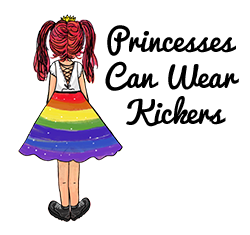Q: How can I write better with dysgraphia? A: follow this guide
I’m often asked ‘how can I write better with dysgraphia’ and unfortunately there is no easy answer. There is no one-cure fits all and actually there are no cures at all. Just strategies to strengthen fine motor skills and ways to cope with it.
Dysgraphia is a very specific learning difficulty affecting fine motor skills, and in particular, handwriting. Every aspect of handwriting is a challenge for any child with dysgraphia from pen grip to word spacing to letter formation. Organisation of sentences is also often affected.
Producing any written work is usually difficult and painful. Children can experience cramps, fatigue and even anxiety. Over time and with no support, school work is often affected, confidence levels drop and grades nose dive.
Their written work is difficult to read, does not match their ability and does not express what they actually think. They may also excessively depend on vision and visual aids to lead them.
For more information on the symptoms of dysgraphia click here
However, this does not need to be your child’s future. There is no reason that your child should unduly suffer because of their poor handwriting.
So… How can I write better with dysgraphia?
Kids with dysgraphia will see significant benefits with early intervention and support. And through the introduction of coping strategies, they will learn from the earliest possible ways that this learning difficulty does not define them.
Their dysgraphia cannot be cured, but with proven strategies in place as soon as possible, they will overcome many barriers.
Touch typing
Once such strategy I guarantee will help is to introduce them to touch typing. And to do this as soon as possible. I cannot recommend this course by Touch-type, Read and Spell highly enough. It is without doubt one of the best on the market and I’ve seen significant improvement with Ella over the years. Typing reduces the issues that need to be controlled such as letter/word spacing, letter formation, following the straight line and pencil grip. Muscle memory will help with spelling and improve skills such as decoding.
Click here to find out more about TTRS and the courses they offer.
Other techniques your child should learn which will improve handwriting, ease the pain and reduce the stress associated with writing include:
Stretching!
Before your child starts any writing exercise, have them wriggle their fingers, shake out their hands, rotate wrists and squeeze a stress ball if you have one. This gets the blood flowing and prepares the muscles in the hand for the activity they are about to undertake.
Cursive
It has been proven that cursive writing is an easier way to write than print. Each letter is connected in the word and this reduces the issue of letter spacing. Cursive script requires a constant, steady movement which is of great use to anyone with weak fine motor skills.
Equipment
Try changing the pencils, pens and paper your child uses.There is specialist paper available with raised lines and also highlighted lines. Pencil grip is affected by dysgraphia so try your child with a thicker pen and/or writing grips. These can make the world of difference.
Please Note that as an Amazon Assocuate, I earn from qualifying purchases
- Package Content: you will receive 200 pieces of handwriting papers suitable for children and approved by teachers; The size of the paper is about 11 x 8.5 inches/ 28 x 21.7 cm, 8 lines per page, the distance between the two solid lines is about 11/16 inches, and the large writing capacity can meet children's daily writing needs
- Thoughtful Design: appropriate spacing lines of writing papers for kids can guide the proper spacing to place letters and numbers correctly, while the yellow highlighted part can avoid writing content that is not on the same level, promote self correction if writing is out of bounds, and help transition to single line paper writing
- Writing Paper for Kids: these kindergarten papers for writing are designed for children in kindergarten and preschool, and the large space lines can help kids practice writing while use their imaginations to write stories and sentences
- Lined Handwriting Paper Sheets: these lined papers for kindergarten writing are designed with uniform yellow shading and visual spacing lines, which will let children write straight, with consistency and proper letter size, promotes the teaching and practice of ABC, letters, words, numbers and calligraphy
- Wide Range of Usages: the kindergarten writing paper with lines is qualified and useful, can be widely applied; You can use it in daily teaching work to take a note, write letters and so on, you can also use it as a gift for your family, friends, students, classmates, coworkers and other people who have kids
- Sufficient Quantity to Use: with the inclusion of 120 sheets of kindergarten paper for writing, our paper ensures that you have more than enough for your daily needs; Whether it is for school, office, or home use, these papers are designed to last
- Exquisite Raised Texture Design: our handwriting paper kindergarten is not your regular stationery, it features a nice sensory texture that enhances handwriting by providing tactile feedback to the writer; Suitable for individuals learning to write or those with visual diminution, this design promotes muscle memory and ensures you achieve clean, beautiful handwriting
- Various Functions in Daily Life: from jotting down class notes, writing letters, practicing handwriting, or creating beautiful calligraphy art pieces, our wide rule paper integrates seamlessly into your daily life; This versatile paper serves multiple functions, making it an essential addition to your stationery collection
- Proper Dimensions to Apply: sizing at approximately 8.3 x 11.2 inches/ 210 x 285 mm, our kindergarten writing paper fits into many folders, binders, or backpacks; It provides ample space for comfortable writing yet compact enough for ease of portability, writing, doodling, sketching, or creating, the possibilities are diverse and abundant
- Suitable for a Wide Range of Users: our handwriting practice paper is not only a fundamental resource for students and professionals, but it is also a nice aid for elderly folks and people with visual decrease; The tactile raised lines will guide the user to write neatly and clearly, making it a practical tool
- This comfortable and soft pencil grips is designed specifically for kids learning to write and finding it difficult to hold pencils. These pencil grippers are perfect for kids and adults to improve their handwriting. It will make the learning process fun and enjoyable rather than a tedious chore
- The pencil grip for toddlers 2-4 years or age 5 is made of food grade silicone making it safe and helps in relieving pressure and reducing hand fatigue. The design is perfect to fit all finger sizes. The pencil grips for kids handwriting also prevent wrist fatigue
- The ambidextrous pencil grips for kids handwriting can be used by both lefties and righties. Their hollow design prevents sweating while you write. Moreover, the narrow end tightly grips allow the young mind to absorb knowledge more efficiently. The children will participate in coloring, drawing, and writing more openly
- These kids pencil holders are available in different colors to increase kids' interest in writing. Pencil grippers are an ideal gift that you send to your colleagues, friends, and children. Furthermore, vibrant colors are also essential in developing motor functions in young developing minds for better engagement
- Handwriting pencil grips for Kids come in a pack of 6 with 3 different Shapes, which help meet every user's needs. Moreover, the purchase is not heavy on the wallet too. The pen grips are an excellent addition to the learning table at school or home
- The STABILO EASYoriginal Holograph Edition is the first ergonomic rollerball specially designed for left or right handers.
- Holographic limited edition EASYoriginal.
- Relaxed hand posture prevents premature muscle fatigue and writing pain.
- Easy smooth handwriting without blots or scratches thanks to the rollerball technology.
- Easy to refill with STABILO EASYoriginal cartridges available medium tip - sold separately
For a list of the best tools for dysgraphia, click here
Record audio
All writing exercises for children with dysgraphia are difficult however when in lectures and note taking, the struggles are catapulted to new levels. Even copying text is difficult. I recommend sending your child into school with a recording device as they get to high school so that they can not only follow the lessons as they are given, but catch up in their own time with any note taking. Another way to counter dysgraphia is through the use of handouts to summarize what they have just been taught.
Accommodations
Any child who has been diagnosed as having dysgraphia should request accommodations within the classroom. These include the ability to record lessons, use a computer, typing instead of writing, and assessing the way your child is tested (multiple choice answers, oral exams etc.)
Brainstorm
Before any in depth writing tasks are undertaken, it’s important that your child brainstorms so that they are prepared for writing. Dysgraphia affects all areas of writing and without proper organisation in place, their writing will not be coherent.
Drafts, mind maps and organisational charts
Following on from above, organizing your thoughts when you have dysgraphia can be difficult. Make use of organisational charts and mind maps so that your child sees their direction clearly. Working in draft form reduces pressure and is actually a far more natural approach to writing. Reviewing previous information and adapting as each draft progresses will ensure consistency and clarity.
Spell out loud
Spelling is not actually affected by dysgraphia. The act of physically writing the word is so when your child is learning spellings at home, encourage them to say the letters out loud. Muscle memory associated with touch typing will also help with spelling.
By following these simple steps, your child will stop asking themselves ‘how can I write better with dysgraphia’. Their fine motor skills will see a great improvement and their confidence levels will improve.
With the right help, your child can be exactly what they want to be. Don’t let dysgraphia hold them back.
If you have any questions about this blog post, or dysgraphia in general please don’t hesitate to get in touch.






Recent Comments